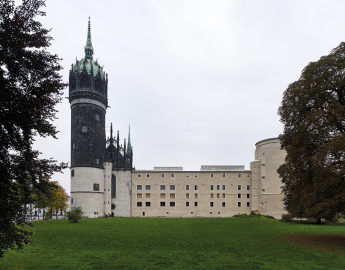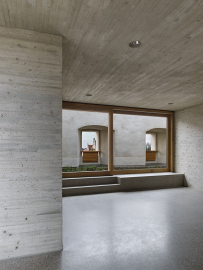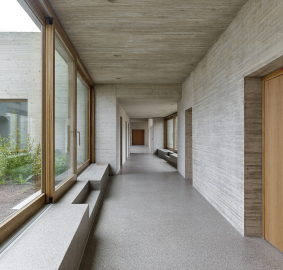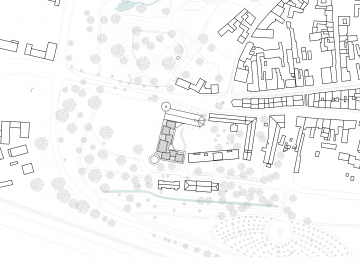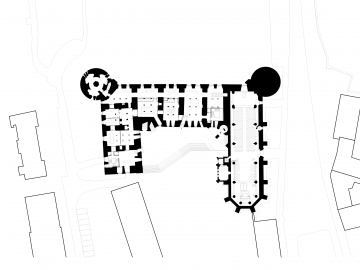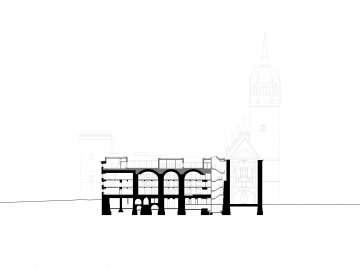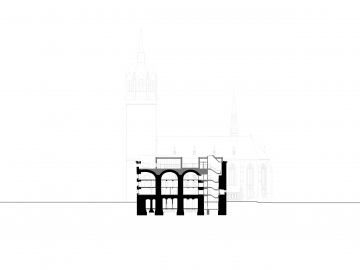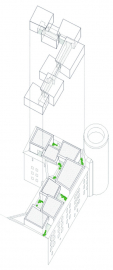Wittenberg Castle
The building as a "Palimpsest".
The historic Wittenberg Castle is renovated on the occasion of the 500th Reformation Jubilee 2017.
The Protestant Preacher’s Seminar, an exhibition, the Reformation History Research Library and the Visitor's Center will get here new workplaces. The project is characterized by the relationship with the overwhelming historical heritage. The building has undergone various transformations throughout history. Built as a residence castle, it served, after partial destruction, as a fortress in the 19th century. The torso of the former building served as a shell for the new use.
The attic is reserved for the preacher’s seminar. The basic idea for the new structure on the roof is an alternating system of blocks and courtyards which follow the pattern of the existing building. They are bounded by a cloister path, which traverses the entire attic and opens up new insights and perspectives.
At the core of our approach to the project was our understanding of the building as a sort of Palimpsest. The term palimpsest defines a parchment (leather treated to a soft surface), whose surface (and written text) has being scraped many times in order to be able to write on it again. Accepting the premise of the building being, metaphorical speaking, a palimpsest, we were confronted with a document that has suffered successive alterations leaving a pattern of superimposed traces. We found ourselves in the same situation as our predecessors, confronted to the necessity of adding to the text, but this time preserving as much as possible of the underlaying fragments. In other words, we developed strategies to satisfy contemporary use requirements while keeping and even enhancing the legibility of the previous typological footprints.
In order to operate in a complex building, with a pattern of overlapping sediments and a heterogeneous program we made use of “editing” (to modify or adapt so as to make suitable or acceptable), “deleting” (to remove from a document or record) and “post-scriptum” (to add a text) as strategies each tailored to an specific case.
Editing: We selected from all overlapping traces the most valuable one and then proceed to “editing” all traces from subsequent uses that interfered with its legibility. In this way we revealed sequences of rooms, beautiful enfilades and the impressive brick vaults that once supported the earth-filled roof – a perfect match with the requirements of the Visitor’s Center, the archive and the Library.
Deleting: New fire and technical regulations required space for new entrances, stairs, elevators and ducts. Demolitions within the existing volume were unavoidable. We reduced the impact to a minimum concentrating them at both ends of the L-shaped building. Here we freed two voids through all the levels of the building and left all traces of our intervention. The new concrete staircase is a complex sequence of bridges and stairs that spiral upwards connecting the original Renaissance stairs.
Post-scriptum: On the upper floor, that was originally filled with earth to protect the building from incendiary attacks we placed the new preacher’s seminary.
We revealed the existing materials brick, stone and wood and chose for the new additions concrete, wood and terrazzo.

